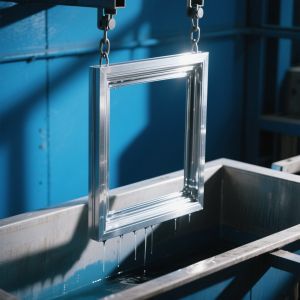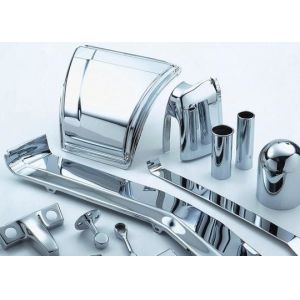Precision Aluminum Electroplating: Redefining Durability and
Precision in Metal Finishing
In the realm of automotive manufacturing, where every micron
matters, precision aluminum electroplating stands as a cornerstone
of excellence. This advanced process transforms raw aluminum into
components that marry lightweight agility with uncompromising
protection, making it indispensable for crafting high-performance
lightweight car parts. Let’s delve into the technology,
applications, and advantages that set precision aluminum
electroplating apart.
The Art and Science of Precision Aluminum Electroplating
Precision aluminum electroplating is a controlled electrochemical
process that deposits a thin, uniform layer of metal (such as
nickel, chrome, or zinc) onto aluminum surfaces. Unlike standard
plating, it demands meticulous control over parameters like current
density, bath chemistry, and temperature to achieve micro-level
uniformity.
Key process characteristics:
- Layer Thickness Control: Achieves consistent coating thicknesses ranging from 5 to 50
microns, tailored to specific part requirements.
- Adhesion Enhancement: Pre-treatment steps (including etching and zincating) ensure the
plated layer bonds seamlessly with aluminum, preventing peeling or
corrosion under stress.
- Surface Finish Precision: Delivers mirror-like smoothness (Ra values as low as 0.05 μm) or
textured finishes, depending on functional or aesthetic needs.
Aluminum Products Transformed by Precision Electroplating
This technology excels in enhancing a wide range of aluminum
components, particularly those critical to lightweight car
performance:
Aluminum Product Category | Typical Applications in Vehicles | Why Precision Electroplating Matters |
Engine Components | Cylinder heads, intake manifolds, valve covers | Resists high temperatures (up to 200°C) and chemical corrosion from
oils/fuels. |
Chassis & Suspension Parts | Control arms, shock absorber housings, linkages | Enhances wear resistance; reduces friction for smoother handling. |
Exterior Trim | Grilles, door handles, wheel rims | Boosts aesthetic appeal with durable, scratch-resistant finishes. |
Electronic Enclosures | Battery terminals, sensor housings (EVs) | Improves conductivity and protects against moisture/dust. |
Advantages That Drive Innovation
Precision aluminum electroplating isn’t just about protection—it’s
a catalyst for better performance in lightweight car components:
- Corrosion Resistance: Extends part lifespan by 300% compared to unplated aluminum,
critical for parts exposed to road salts, humidity, or chemicals.
- Weight-to-Strength Ratio: Adds minimal weight (≤5% of the base aluminum part) while
increasing surface hardness by 200–400 HV.
- Cost Efficiency: Reduces long-term maintenance costs by minimizing part
replacement, especially in high-wear areas like suspension systems.
- Design Flexibility: Accommodates complex geometries (e.g., intricate engine brackets)
without sacrificing plating uniformity, supporting innovative
lightweight car designs.
Why It’s Indispensable for Lightweight Car Components
In the push for lighter, more efficient vehicles, aluminum is a
star material—but its natural susceptibility to corrosion and wear
demands reinforcement. Precision electroplating addresses this gap,
ensuring aluminum parts retain their lightweight benefits while
gaining durability. For electric vehicles, in particular, it
protects battery-related components from corrosion, extending range
and reliability.
From race cars to daily drivers, precision aluminum electroplating
is the unsung hero that makes lightweight aluminum parts both tough
and efficient.
Precision plated. Performance proven.













